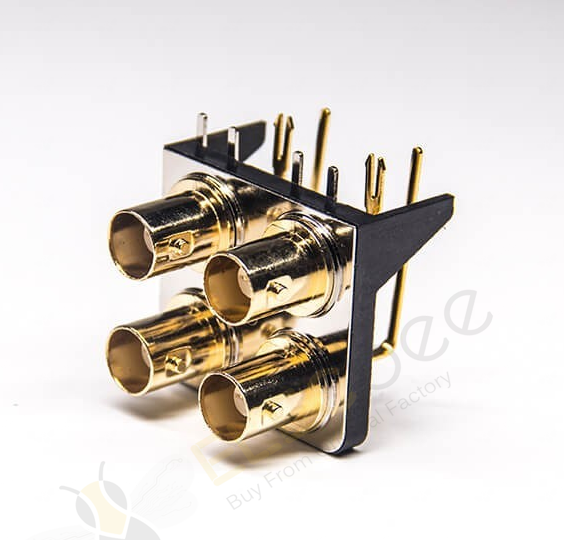BNC (Bayonet Neill-Concelman) connectors are commonly used in audio and video equipment to transmit signals between devices. They are known for their reliability, durability, and ease of use. However, a common question that arises is whether BNC adapters can be used for both analog and digital signals. In this article, we will explore the capabilities of BNC adapters and whether they are suitable for both analog and digital signals.
Understanding BNC Adapters
BNC connectors are designed to transmit signals using coaxial cables. They are commonly used in audio and video equipment such as cameras, monitors, and recorders. BNC connectors have a bayonet-style locking mechanism that ensures a secure connection between devices, making them ideal for applications that require a stable and reliable connection.
BNC adapters are used to convert one type of BNC connector to another. For example, a male BNC connector can be converted to a female BNC connector using a BNC adapter. BNC adapters are available in various configurations, including straight, right-angle, and T-shaped adapters.

Analog Signals and BNC Adapters
Analog signals are continuous signals that vary in amplitude and frequency over time. They are commonly used in audio and video equipment to transmit signals between devices. Analog signals require a stable and reliable connection to ensure that the signal quality is maintained throughout the transmission process.
BNC adapters are suitable for analog signals as they provide a secure and reliable connection between devices. BNC connectors are designed to minimize signal loss and maintain signal integrity, making them ideal for applications that require a high-quality analog signal.
Digital Signals and BNC Adapters
Digital signals are discrete signals that represent data using binary code. They are commonly used in audio and video equipment to transmit digital signals between devices. Digital signals require a stable and reliable connection to ensure that the data is transmitted accurately and without error.
BNC adapters are also suitable for digital signals as they provide a secure and reliable connection between devices. However, it is important to note that not all BNC adapters are suitable for digital signals. BNC adapters that are designed for analog signals may not be suitable for digital signals as they may not have the necessary bandwidth to handle high-speed digital signals.
BNC adapters that are designed for digital signals are known as 75-ohm BNC adapters. These adapters are designed to handle high-speed digital signals and are commonly used in applications such as high-definition video and digital audio. 75-ohm BNC adapters are designed to minimize signal loss and maintain signal integrity, making them ideal for applications that require high-quality digital signals.
Choosing the Right BNC Adapter
BNC connectors and adapters can be used for both analog and digital signals, but there are some things to keep in mind:
- BNC connectors themselves are just physical connectors and can handle a wide range of frequencies and signal types. However, the cable used to connect BNC connectors can impact signal integrity, especially at high frequencies or for digital signals. For analog signals, a typical coaxial cable works well for most BNC uses. For digital signals, a lower loss cable designed for digital applications is typically recommended.
- Impedance matching is important for digital signals to avoid reflections and signal distortion. The impedance of the BNC connectors and connecting cables should match the source and load impedances. Most digital equipment uses 50 or 75 ohm impedance.
- Shielding is important for avoiding crosstalk between signals. Shielded BNC cables help ensure each signal is isolated.
- Bandwidth and attenuation requirements need to be considered. A high-quality, low-loss coaxial cable is needed to adequately carry high bandwidth, high frequency analog or digital signals without excess attenuation.
- For high-speed digital signals, things like insertion loss, return loss, and crosstalk become more significant. In these cases, special high-speed BNC connectors and cables designed specifically for digital signals may be needed.
- In some cases, BNC may not be the optimal connector for high-speed digital signals. Other connectors like SMA, 3.5mm, or specialized digital connectors may provide better performance. BNC can work for many digital signals up to a few GHz, but has higher loss at very high frequencies.
Conclusion
BNC adapters are commonly used in audio and video equipment to transmit signals between devices. They are known for their reliability, durability, and ease of use. BNC adapters are suitable for both analog and digital signals, but it is important to choose the right adapter for the type of signal that you will be transmitting.
If you are transmitting analog signals, then a standard BNC adapter will be suitable. However, if you are transmitting digital signals, then a 75-ohm BNC adapter will be required. It is also important to consider the cable that you will be using with the BNC adapter and ensure that it is matched to the impedance of the BNC connector.
By understanding the capabilities of BNC adapters and choosing the right adapter for your application, you can ensure that your signals are transmitted accurately and without error.






